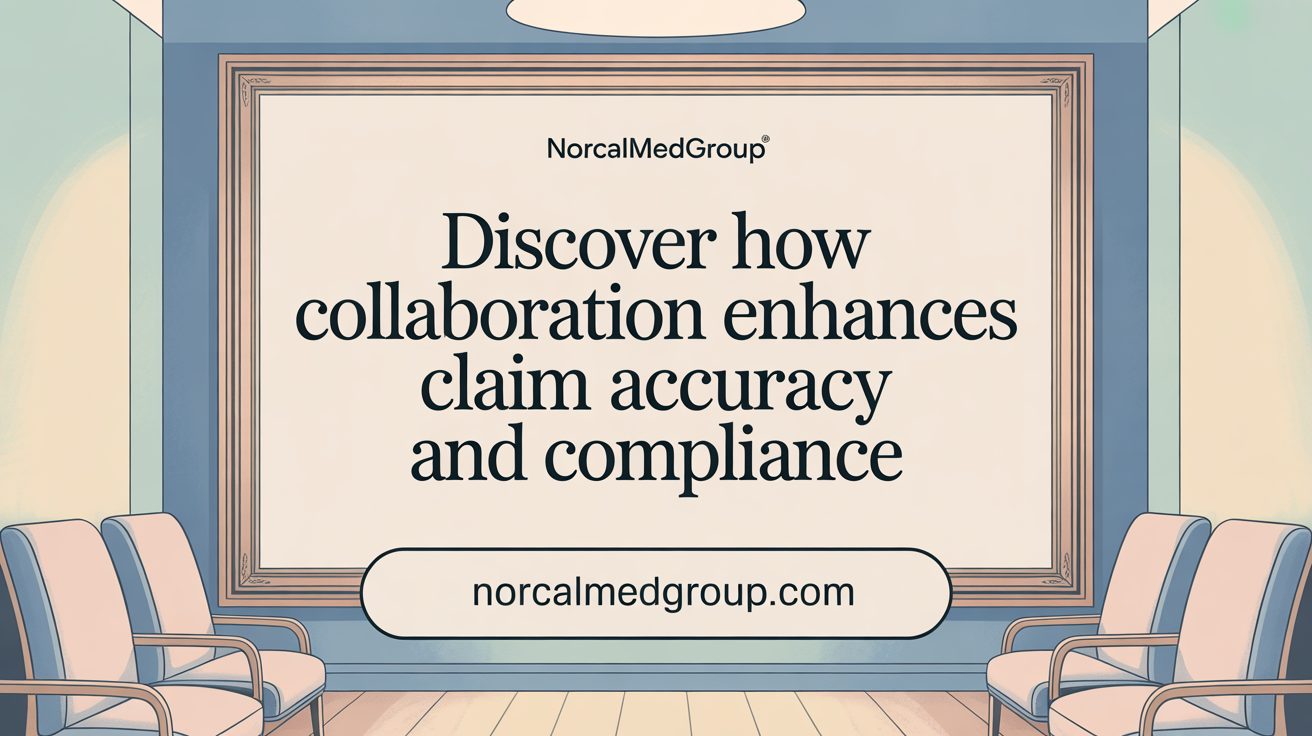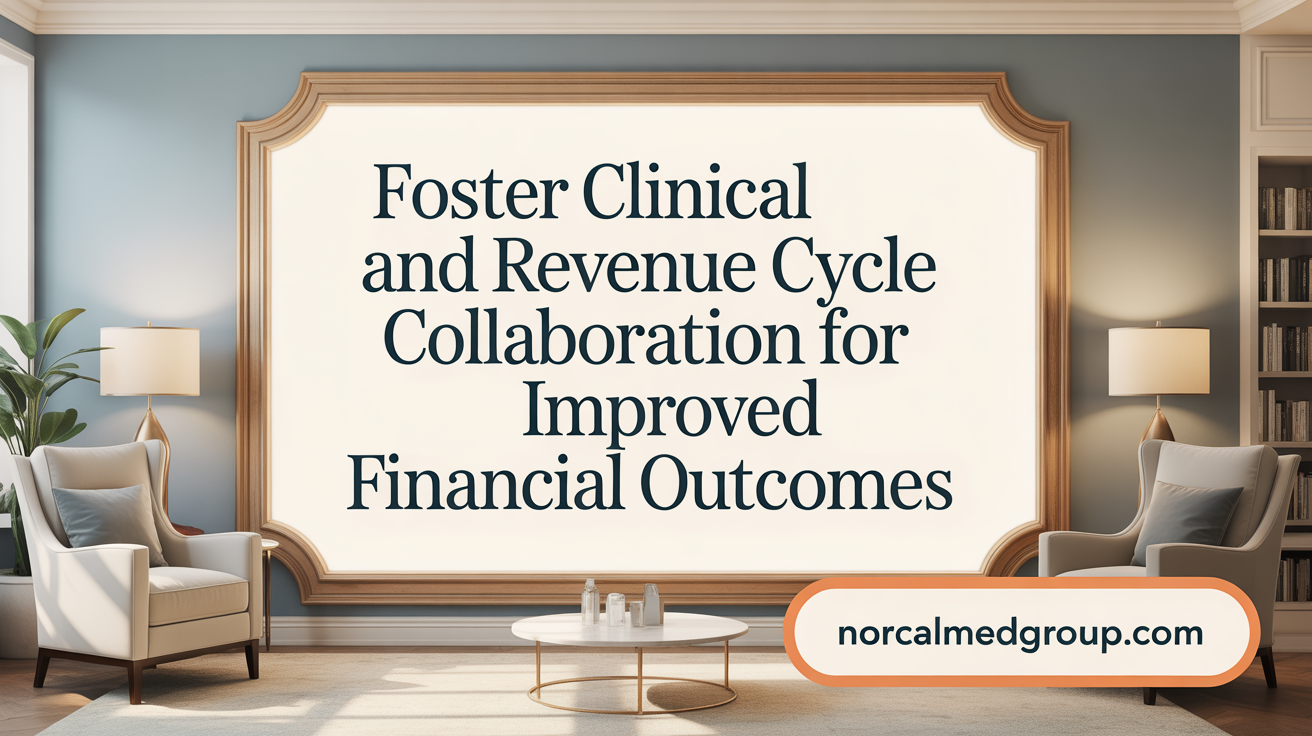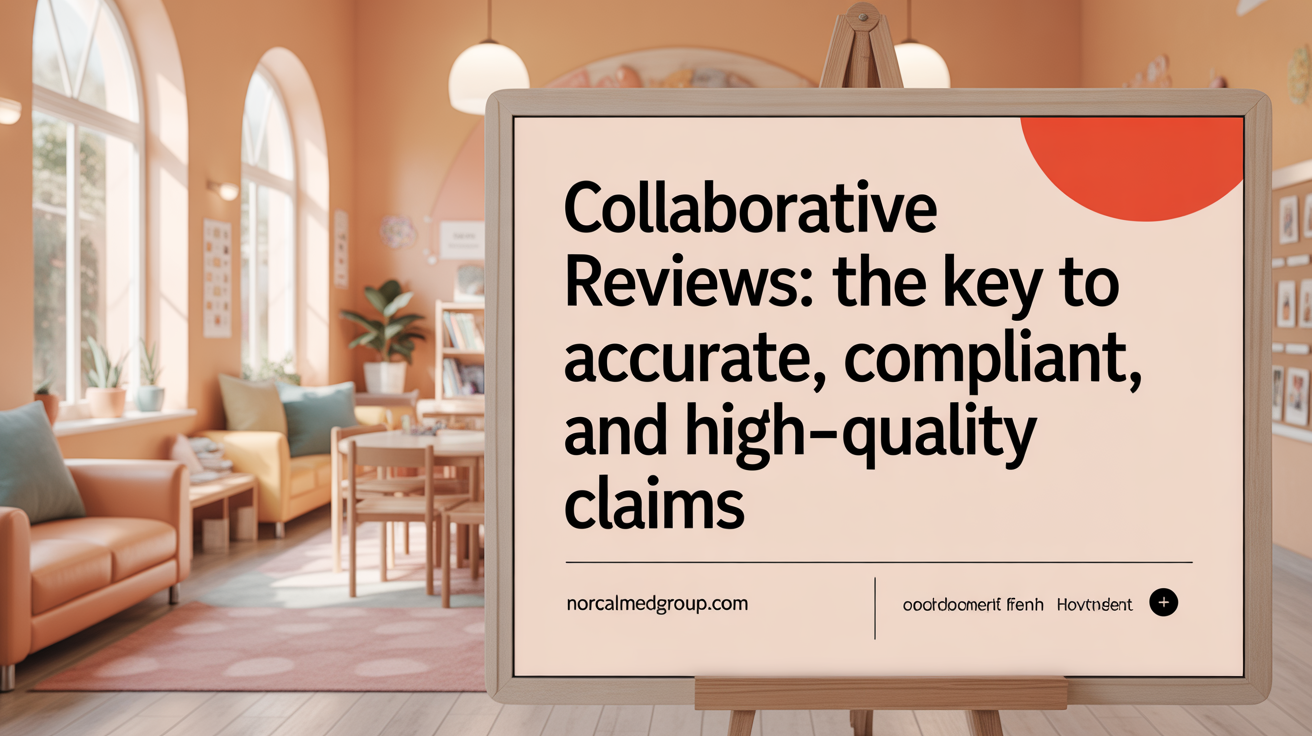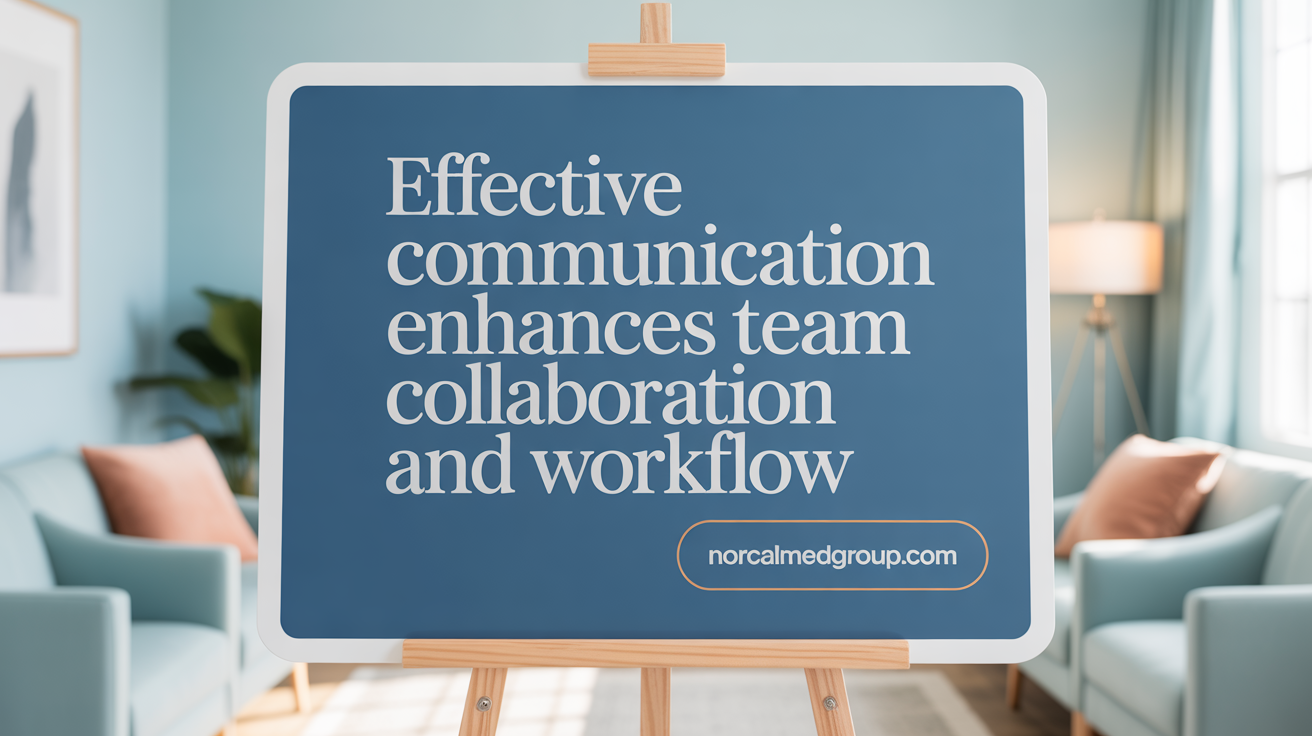The Power of Teamwork in Claims Management
Accurate medical claims are the backbone of efficient healthcare revenue cycles, but errors and inaccuracies remain a pervasive challenge. Collaborative review processes bring together clinical teams, coders, billing specialists, and payers to collectively ensure claim accuracy before submission. This integrated approach not only minimizes mistakes but also improves compliance, reduces denials, and accelerates reimbursement. In this article, we explore the multifaceted benefits of collaborative claims scrubbing and review, highlight best practices, and demonstrate how emerging technologies support this critical effort.
Understanding How Collaborative Reviews Improve Claim Accuracy

How do collaborative reviews improve claim accuracy?
Collaborative reviews play a vital role in enhancing the accuracy of medical claims by encouraging teamwork among clinical, coding, and billing professionals. When these teams work together, they can verify and cross-check the clinical documentation against billing codes before submitting claims. This process minimizes mistakes such as errors in coding, missing information, or improper documentation that often lead to claim denials.
Incorporating human oversight with the support of Computer-Assisted Coding (CAC) systems is crucial. While CAC can expedite the coding process, it occasionally misinterprets clinical notes, especially in complex cases. Human reviewers help catch these inaccuracies, ensuring that codes precisely match the documented clinical details.
Regular audits and root cause analyses are essential elements of this collaborative effort. They help identify patterns of discrepancies, whether related to documentation quality or coding errors. By understanding the root causes of errors, organizations can implement targeted improvements in their workflows.
Furthermore, continuous education through Clinical Documentation Improvement (CDI) programs strengthens the capabilities of all team members. These programs promote better understanding of documentation standards, coding practices, and compliance requirements, fostering a culture of accuracy.
Overall, teamwork, combined with ongoing oversight and education, builds a robust system for producing precise, compliant claims. This not only reduces claim rejections and regulatory penalties but also optimizes reimbursement and enhances overall revenue cycle management.
The Critical Role of Service Line Review and Documentation Accuracy

Why is it important to review each service line on a claim before submitting it for payment?
Conducting a detailed review of each service line prior to submitting a claim is vital for achieving accurate billing and reimbursement. This process involves checking that every procedure, diagnosis, and associated code are precisely documented and appropriately coded. Such accuracy reduces the likelihood of errors that can lead to claim denials or delays.
Utilizing claim scrubbing software and verification tools can significantly enhance this review process. These tools automatically scan claims to identify mismatched or incomplete information, flag potential compliance issues, and verify coverage details. This proactive approach ensures that all necessary preauthorizations and supporting documentation are in place.
Adhering to payer requirements and coding standards like ICD-10, CPT, and HCPCS is essential for compliance. Accurate service line review helps organizations meet these standards consistently, minimizing the risk of costly resubmissions.
The impact of meticulous review extends beyond compliance. It directly influences the speed of reimbursement. By catching errors early, providers can avoid rework, reduce administrative costs, and ensure timely payments. In a landscape where nearly 20% of claims face delays or denials due to inaccuracies, thorough service line review becomes a cornerstone of efficient revenue cycle management.
Implementing best practices in claim scrubbing, verification, and documentation review not only streamlines workflows but also supports overall financial health. It fosters compliant, accurate claims that are less likely to be rejected, ultimately leading to faster reimbursements and a better patient experience. Ongoing staff training on review procedures and emerging coding updates further enhances this critical process.
Building Bridges: Collaboration Between Payers and Providers to Enhance Accuracy

How does collaboration between healthcare payers and providers impact claim accuracy?
Effective collaboration between healthcare payers and providers plays a crucial role in increasing claim accuracy. Establishing secure and reliable communication channels allows both parties to share vital data promptly and accurately. Integrating advanced technology solutions, such as Claims Manager and Claims and Payment System (CAPS), automates error detection, reduces manual data entry, and streamlines claim workflows.
These partnerships promote mutual understanding of payer policies and documentation standards, enabling providers to submit complete and correct claims from the outset. Real-time data sharing and transparency help identify and resolve discrepancies proactively, minimizing rejections and denials.
Joint initiatives further bolster claim accuracy. Implementing quality measures and overpayment prevention systems foster better data sharing, which aligns clinical documentation with billing requirements. Such initiatives reduce administrative burdens, support compliance, and facilitate smoother reimbursements.
The outcome is a cycle of trust and efficiency—faster payments, fewer errors, and strengthened relationships. This collaboration not only enhances clinical and financial outcomes but also helps align efforts toward value-based care, which emphasizes quality and cost-effectiveness.
Overall, payer-provider partnership improves the precision of claims, accelerates reimbursements, and fosters improved healthcare delivery.
How technology integration and joint initiatives influence claim accuracy, denials, and reimbursements
Technologies like Claims Manager and CAPS systems automate validation and error checks, greatly reducing manual errors and speeding up claim processing.
Joint initiatives, such as quality measure reporting and overpayment prevention programs, promote shared responsibility for data accuracy. These efforts help identify issues earlier and enable corrective actions before claims are submitted.
The combined effect of technological and strategic collaborations results in fewer claim rejections, quicker reimbursements, and a more efficient revenue cycle. It also builds a culture of continuous improvement, where clinical and administrative teams work together towards common goals.
In conclusion, enhancing communication, leveraging technology, and pursuing joint quality efforts are essential strategies for reducing claim denials and improving healthcare financial outcomes.
Synergy in Action: Clinical and Revenue Cycle Team Collaboration

What role does collaboration between clinical and revenue cycle teams play in reducing claim errors and denials?
Effective collaboration between the clinical team and revenue cycle management is crucial for minimizing claim errors and reducing denial rates. When these teams work closely, clinical documentation accurately reflects the care provided, ensuring that billing codes and authorization requirements align with payer standards.
Open communication is essential. Regular multidisciplinary meetings allow team members to review denial patterns and address common documentation issues proactively. Sharing performance metrics, such as denial rates, creates a culture of accountability and continuous improvement.
Physicians and clinical staff are vital partners in this process. Educating healthcare providers about the impact of their documentation on claim success fosters better compliance with coding and billing standards, ultimately reducing errors stemming from miscommunication or incomplete records.
Technology plays a supporting role. AI, RPA (Robotic Process Automation), and analytics tools help identify potential risks early—such as missing documentation or coding mismatches—allowing teams to address issues before claims are submitted. These tools optimize workflow efficiency and help catch errors automatically.
This strong partnership results in a smoother claims process, lower denial rates—currently around 17% for all in-network claims—and improved reimbursement, which enhances overall financial health. In summary, collaboration ensures accurate documentation, reduces costly errors, and streamlines revenue cycles, paving the way for sustainable practice growth.
Harnessing Technology, AI, and Automation in Collaborative Reviews

How can technology, AI, and automation support collaborative reviews for better claim accuracy?
Modern healthcare organizations increasingly rely on advanced technology, artificial intelligence (AI), and automation to enhance the accuracy and efficiency of claims review processes. These tools automate the extraction and validation of data from clinical and administrative documentation, reducing manual effort and minimizing human errors that often lead to claim discrepancies.
AI-powered systems excel at anomaly detection and risk assessment by analyzing large volumes of claims data to spot inconsistencies, irregularities, or potential fraud. This targeted approach enables reviewers to focus their attention on more complex or high-risk claims, improving overall precision.
Furthermore, natural language processing (NLP) technology helps interpret unstructured data such as physician notes, pathology reports, and imaging reports. By transforming raw text into structured, verifiable information, NLP ensures that detailed clinical documentation accurately informs coding and billing decisions.
Real-time communication platforms and integrated analytics dashboards facilitate seamless collaboration among clinical, coding, and billing teams. These systems enable instant sharing of insights, status updates, and error alerts, fostering a coordinated review environment.
Advanced AI models, including machine learning algorithms, continuously learn from past claims to refine their accuracy in flagging errors and predicting denial risks. This ongoing analysis supports proactive claim management, reduces delays, and enhances compliance.
Overall, the integration of these technological solutions streamlines the claims review workflow, improves data accuracy, and boosts confidence in the claims process by supporting continuous learning and adaptive insights. The result is quicker resolutions, fewer denials, and a more reliable revenue cycle.
Collaborative Reviews: Driving Claims Correction, Compliance, and Documentation Quality

What is the relationship between collaborative reviews and claims correction, compliance, and documentation quality?
Collaborative reviews play a vital role in improving claims accuracy, ensuring regulatory compliance, and enhancing documentation quality. By bringing together clinical staff, medical coders, auditors, and billing personnel, these reviews facilitate a comprehensive examination of medical records and claims. This teamwork helps identify and correct errors more efficiently, reducing claim rejections and denials.
Through shared expertise, teams can also improve the accuracy of translating clinical documentation into billing codes. Proper documentation and coding are critical for compliance with payer policies and regulations, and collaborative reviews support this by aligning clinical information with appropriate codes.
Additionally, this approach fosters ongoing feedback and education. Coders learn from clinical staff about documentation nuances, while clinicians understand how their notes impact billing outcomes. Over time, these efforts contribute to a culture of continuous improvement.
Implementing systematic training programs, routine audits, and updating billing systems based on review findings ensures sustained progress. Such comprehensive strategies address recurring issues, streamline workflows, and promote transparency.
Ultimately, collaborative reviews create a structured environment that enhances accuracy and compliance. They support an efficient revenue cycle by reducing errors, preventing improper payments, and maintaining high-quality documentation—fundamental factors for financial health and regulatory adherence.
How does translation accuracy from clinical documentation to billing codes benefit the revenue cycle?
Accurate translation minimizes errors that can lead to claim rejections or delays. When clinical notes clearly and precisely describe patient conditions, coders can assign correct codes, which ensures appropriate reimbursement.
Why is continuous feedback and education important for coders and providers?
Ongoing training based on review insights helps keep staff updated with evolving coding standards and documentation requirements. It also raises awareness about common pitfalls, thereby reducing future errors.
What role do system improvements and audits play?
Regular audits reveal patterns of mistakes that can be targeted through system enhancements such as updated software algorithms, checklists, or integrated guidelines. These improvements streamline the review process and support sustainable compliance.
| Aspect | Benefit | Implementation Example |
|---|---|---|
| Interdisciplinary Error Correction | Faster identification and resolution of issues | Weekly team meetings reviewing recent rejections |
| Enhanced Translation Accuracy | Fewer coding errors, better compliance | Training on documentation standards and coding updates |
| Feedback and Educations | Continuous uplift of skills and knowledge | Periodic workshops for clinical and coding staff |
| System and Audit Improvements | Preventative approach to recurring errors | System updates based on audit findings |
By integrating these strategies, health organizations can strengthen their claim processes and uphold rigorous documentation standards, ultimately leading to more reliable revenue capture and regulatory compliance.
Collaborative Communication: Reducing Denials and Enhancing Reimbursement Efficiency

How do communication and collaboration influence the reduction of claim denials and errors?
Effective communication and teamwork among clinical, billing, and payer groups are vital for decreasing claim errors and rejections.
Regular discussions between these teams ensure everyone understands the specific documentation, coding standards, and payer policies required for clean claims.
Involving physicians in training about the impact of documentation quality helps improve accuracy at the source, reducing common mistakes.
Utilizing advanced tools such as AI and automation enables early error detection and pattern analysis, preventing recurring issues.
Strong, transparent relationships with insurance payers and prompt exchanges of information lead to quicker resolution of claim disputes.
This collaborative approach promotes a culture of accountability and continuous process improvements.
By working together, all parties can promptly identify and correct issues, streamline claims workflows, and increase the likelihood of first-pass approvals. Overall, coordinated efforts across departments and technology support significantly reduce errors and contribute to a more efficient revenue cycle.
The Future of Claims Accuracy Through Collaboration
Collaborative review processes represent a transformative approach to enhancing claim accuracy, reducing denials, and optimizing reimbursement cycles in healthcare. By uniting clinical, coding, billing, and payer teams with the powerful support of technology, organizations create a robust system capable of proactive error detection and swift resolution. Continuous education and open communication foster shared accountability, while AI and automation streamline workflows and improve compliance. Moving forward, embracing these collaborative strategies will be key to financial health, regulatory adherence, and improved patient satisfaction, making them indispensable pillars of modern claims management.
References
- Monitoring Claims for Accuracy
- Collaboration Between Clinical and Revenue Cycle Teams
- Compliance – Collaboration: The Benefits of a Central Claims Library
- Preventing Claim Rejections: Best Practices for Clean Claims
- How to Reduce Denied Claims and Rev Up Your Revenue Cycle
- Automation is Revolutionizing Medical Claims - CollaborateMD
- How Can Healthcare Providers Improve Claims Submission ...
- How to Streamline Your Claims Processing for Maximum Efficiency
- Monitoring Claims for Accuracy
